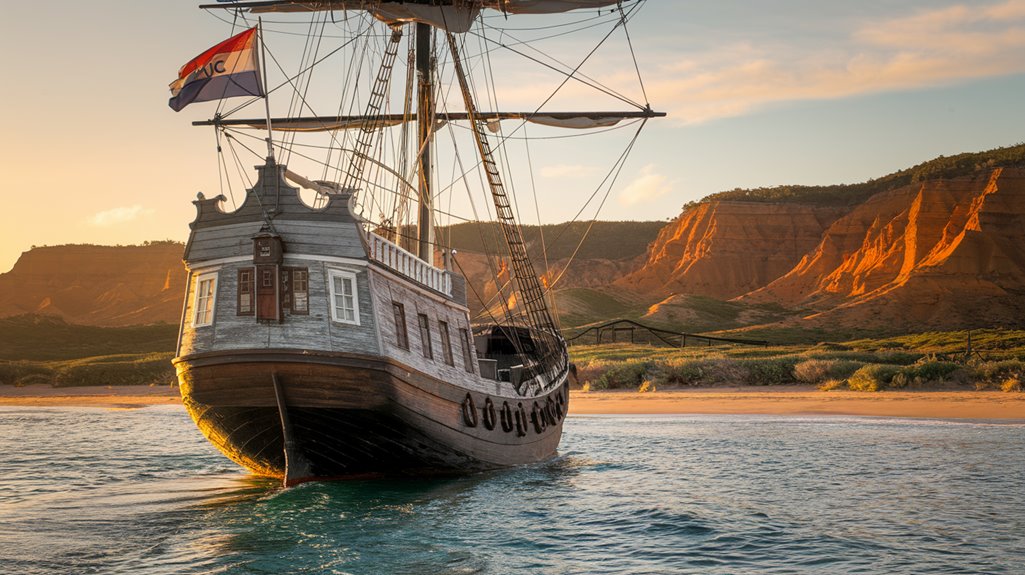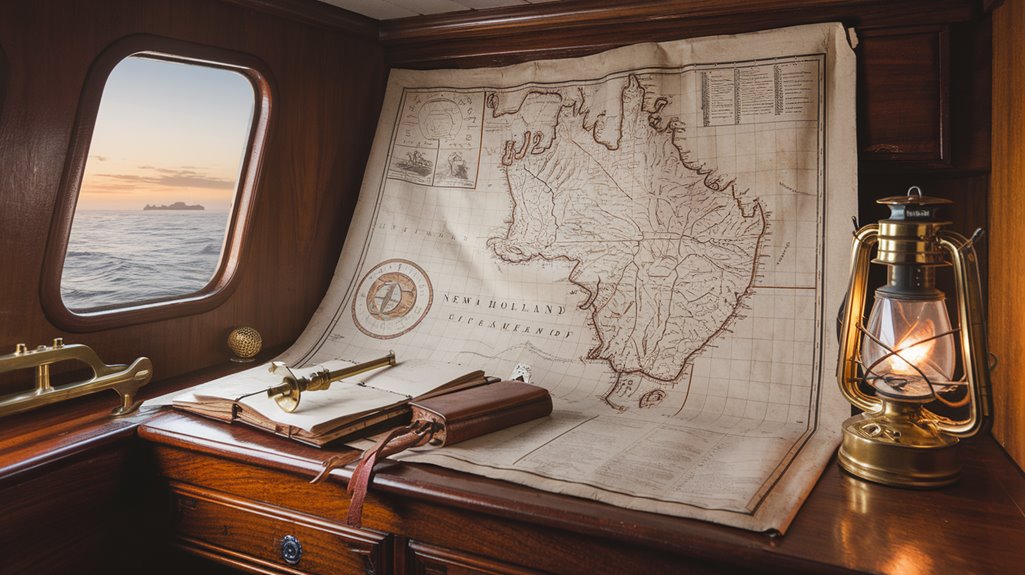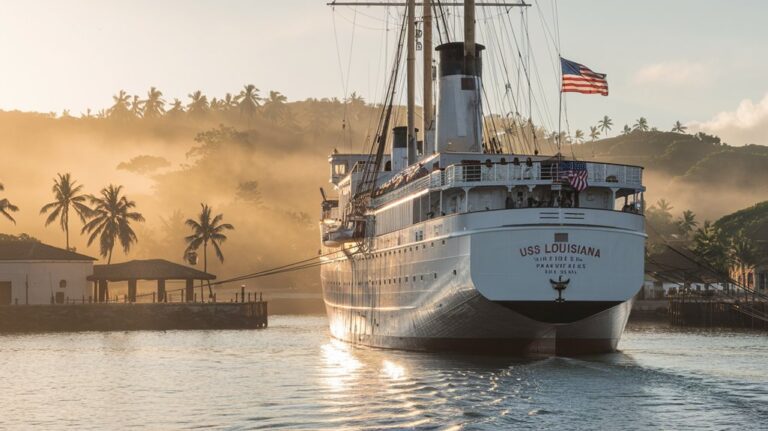Australia Was Previously Named New Holland
Like a faded map tucked away in an ancient atlas, the name "New Holland" has largely disappeared from modern memory. You've probably seen countless references to Australia, but you might not know that this vast continent once bore a different identity. The Dutch sailors who first charted these mysterious shores gave the land its original European name, and it's a tale that weaves together exploration, colonization, and the evolution of a nation's identity.
The Dutch Discovery and Naming of New Holland
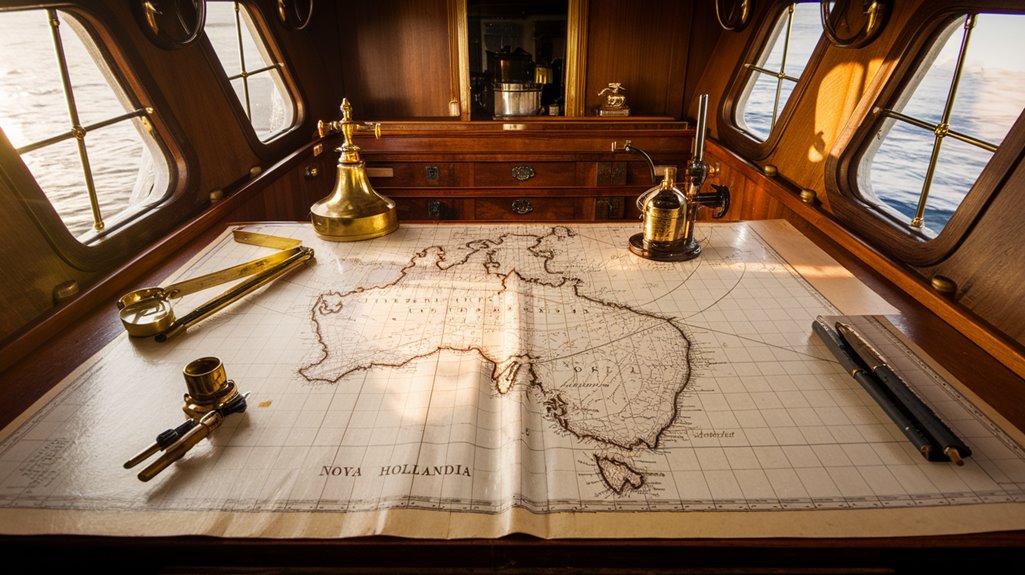
As Dutch maritime power expanded in the early 17th century, the exploration of Australia began with Willem Janszoon's historic landing in 1606. The Dutch experienced losses of 60 percent of their crews to diseases like scurvy and dysentery during these long voyages. Driven by their quest to establish trade routes to the spice islands, the Dutch pioneered navigational techniques that helped them chart the continent's northern coastline.
You'll find that Dutch explorers like Cornelius and Frederick Houtman paved the way for future expeditions, drawing from Portuguese seafaring knowledge and terminology.
The most significant development came when Abel Tasman's contributions led to the continent being named "New Holland" in 1644. This name would stick for nearly two centuries, appearing on European maps and documents. The Dutch East India Company deemed the region unsuitable for colonization due to its perceived lack of resources.
While the Dutch extensively mapped the coastline and named numerous landmarks, they never established permanent settlements, ultimately leaving the door open for British colonization.
Early European Exploration and Mapping
When European maritime exploration of Australia began in 1606, both Dutch and Spanish expeditions made groundbreaking discoveries that would shape the continent's future. Dutch navigator Willem Janszoon landed in Cape York Peninsula, while Spanish explorer Luís Vaz de Torres navigated the strait that now bears his name.
Over the next century, you'll find that Dutch seafarers dominated the exploration, with 29 navigators mapping the western and southern coastlines using advanced navigational techniques of their time. Abel Tasman's voyages in 1642 and 1644 resulted in the continent being named New Holland. It was Dirk Hartog who made a significant contribution when he became the first European to land at Shark Bay in 1616.
While indigenous interactions were often limited, these early explorations laid the foundation for future European understanding of the continent.
English explorer William Dampier's north-western coastal expeditions in 1688 and 1699 preceded James Cook's famous 1770 journey, where he charted the eastern coast for Britain, completing much of the continental mapping puzzle.
The British Arrival and Territorial Claims
The British Empire's territorial claim over Australia stemmed from their interpretation of the Doctrine of Terra Nullius, which wrongly assumed the continent was uninhabited.
Abel Tasman's explorations preceded British interest in the continent by over a century, yet the Dutch never established permanent settlements.
When the British established their settlement at Sydney Cove in 1788, they'd already defined their territorial boundaries, using the 135° east longitude as the western limit to avoid Dutch confrontation.
The initial instructions for establishing the penal colony were officially lost, with only draft versions remaining from Lord Sydney.
You'll find that British sovereignty wasn't based on treaties with Indigenous peoples but rather on colonial appropriation.
Governor Phillip's commission granted him authority over vast territories extending from the coast to deep inland, despite the presence of First Nations.
The High Court of Australia later grappled with this contentious issue, acknowledging that while the lands were "settled" under Terra Nullius, Indigenous rights remained a complex legal matter beyond Australian courts' jurisdiction.
From New Holland to Australia: The Name Change
Dutch seafarer Abel Tasman first bestowed the name New Holland (Nieuw-Holland) upon Australia in 1644, marking the beginning of a naming convention that would persist for nearly two centuries.
The name evolution from New Holland to Australia reflects the continent's changing cultural significance as British influence grew. Despite the Dutch exploration and naming, no Dutch colonies were ever established in New Holland. The Dutch maintained their sovereignty claims through right of discovery, with evidence displayed on stones at the Stadthouse in Amsterdam.
You'll find several key developments in this progression:
- Matthew Flinders proposed "Australia" in 1804, initially keeping New Holland for the western region
- The British government officially adopted "Australia" in 1824
- British legislation first used "Australia" in 1828
- The name New Holland gradually faded from common usage by the 1850s
The Dutch continued using Nieuw Holland until the late 19th century before switching to Australië, while the name's legacy lives on in scientific nomenclature through species names containing "novaehollandiae."
Scientific Legacy in Species Names
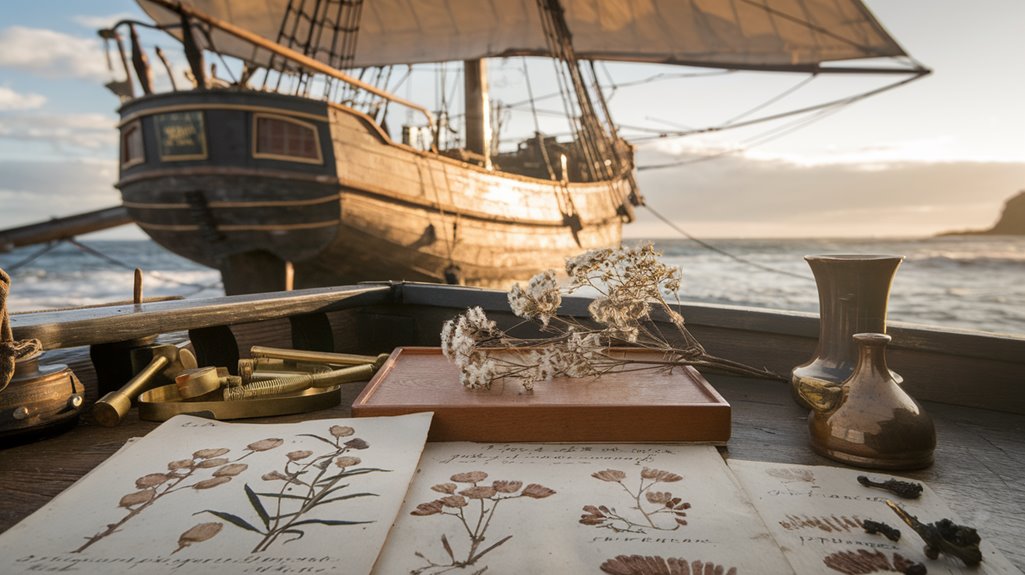
New Holland's influence extends beyond historical maps and documents into modern scientific nomenclature, where you'll find numerous species names bearing witness to Australia's Dutch colonial past.
Similar to how literary characters inspire scientific names, the scientific community has adapted to naming species after mythological figures and deities. Some species even receive names through charitable donations, where institutions accept financial contributions to secure naming rights. This practice, alongside geographical naming conventions, adds rich cultural context to taxonomic classifications.
Today, you'll notice that scientific nomenclature more commonly reflects Australia's current name in genera like *Australocyparis* and *Australovenator*. These names celebrate Australian biodiversity and the continent's unique natural heritage.
The geographical influence is particularly evident in names like *Tasmanianthus*, which pays tribute to the island state of Tasmania.
While some names honor Australia's geography, others draw inspiration from broader cultural references. Scientific naming conventions, governed by organizations like the ICZN and IBC, guarantee that each new species name accurately represents its origins while maintaining standardized classification systems for future generations.

